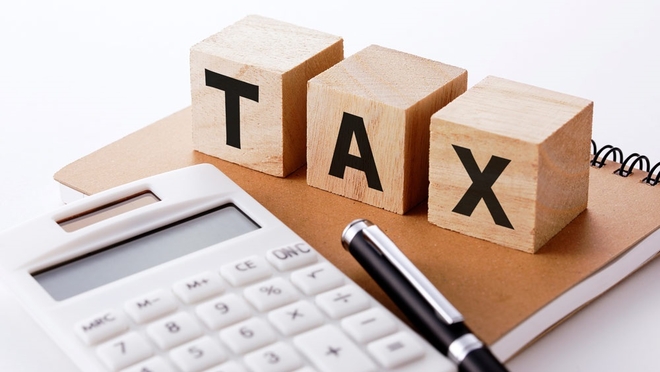
April 1 marks the beginning of a new financial year. This also happens to be the time when you would be receiving a reminder from the accounts department of your company, asking you to declare your investments and which tax regime you want to opt for.
If you are a salaried individual, you have two options: old tax regime and new tax regime. Choosing which to opt for is crucial since the TDS (tax deductible at source) is calculated accordingly, determining your in-hand salary.
So, let's look at which tax regime you should opt for. Below is a breakdown of the income tax slabs under the old and new tax regimes, along with fundamental differences between the two.
A primer
While the old tax regime has fewer tax slabs, the new tax regime has lower tax rates corresponding to each income group. Further, the tax exemption limit under the new regime has been increased to Rs 3 lakh, whereas it is Rs 2.5 lakh in the old regime.
Here's a table showing the differences in income tax slab rates between the two regimes.
Tax slabs: Old vs new tax regime
The new regime has more tax slabs compared to the old one
Old tax regime
| Income (Rs) | Tax rate (%) |
|---|---|
| Up to 2.5 lakh | Nil |
| 2.5 to 5 lakh | 5 |
| 5 to 10 lakh | 20 |
| Above 10 lakh | 30 |
New tax regime
| Income (Rs) | Tax rate (%) |
|---|---|
| Up to 3 lakh | Nil |
| 3 to 6 lakh | 5 |
| 6 to 9 lakh | 10 |
| 9 to 12 lakh | 15 |
| 12 to 15 lakh | 20 |
| Above 15 lakh | 30 |
| Note: Applicable for resident Indians under 60 years of age. | |
- As you can see from the above table, the new tax regime offers lower tax rates corresponding to each income group.
- However, this comes at the cost of foregoing several deductions and exemptions available under the old regime, including house rent allowance (HRA), interest on home loan, Section 80C and 80D (premium paid on health insurance) and so on.
- On the brighter side, the benefit of rebate under Section 87A and standard deduction of Rs 50,000 for salaried individuals applies to the new tax regime as well. In other words, it effectively makes your income of up to Rs 7.5 lakh tax-free as against Rs 5.5 lakh in the case of the old regime.
Old vs new: Which should you choose?
While the new tax regime allows for more streamlined and simplified return filing, it does not have many deductions and exemptions of the old regime.
Hence, the old tax regime is more suitable for those who can make good use of the available deductions and exemptions, such as:
-
House rent allowance
- Interest on home loan
- Rs 1.5 lakh tax deduction under Section 80C of the Income Tax Act
- A further Rs 50,000 tax deduction if investing in the National Pension Scheme
- Premium paid for health insurance under Section 80D of the Income Tax Act..
Direct comparison between old and new tax regime
If you look at the middle column titled 'Deductions required' in the table below, the amount mentioned there can determine which tax regime you should choose. For instance, assuming the annual income is Rs 10 lakh and your deductions (aggregate of HRA, 80C investments, etc.) are less than Rs 2.5 lakh, we suggest you choose the new regime. If it exceeds Rs 2.5 lakh, go for the old tax regime.
Old or new: Which is better for you?
Choose the old tax regime if the deductions exceed the required amount
| Income (Rs) | Deductions required (Rs) | Tax liability (Rs) |
|---|---|---|
| Up to 7 lakh | 1,50,000 | - |
| 8 lakh | 1,62,500 | 31,200 |
| 9 lakh | 2,12,500 | 41,600 |
| 10 lakh | 2,50,000 | 54,600 |
| 11 lakh | 2,75,000 | 70,200 |
| 12 lakh | 3,00,000 | 85,800 |
| 13 lakh | 3,12,500 | 1,04,000 |
| 14 lakh | 3,25,000 | 1,24,800 |
| 15 lakh | 3,58,333 | 1,45,600 |
| 15.5 lakh to 50 lakh | 3,75,000 | 1,56,000 + 31.2% of income in excess of 15.5 lakh |
| Note: Calculations after taking into consideration the standard deduction of Rs 50,000 | ||
Our view
The new tax regime is a better option for individuals with an annual income of Rs 7.5 lakh or lower since no tax is levied up to this amount.
For those earning more than Rs 7.5 lakh per annum, the old tax regime might be more suited, provided you can take advantage of the available deductions and exemptions. You can use our tax calculator to evaluate which regime benefits you more.
If the tax calculator indicates the old system is better for you, you'd have to voluntarily opt for it because, from FY24, the government made the new tax regime the default option.
Also read: Which ITR form do you need to fill?









